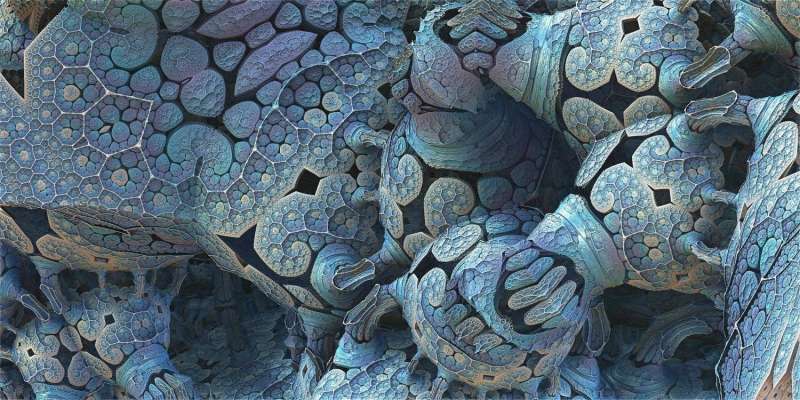Researchers look for life's (lower) limits

When energy and nutrients abound, a bacterium will repair itself while synthesizing new parts to create a twin and then split, all as quickly as conditions allow. But if resources shrink, so does growth rate. The cell responds by shunting its dwindling supplies from replication to repair, shutting down processes until it's running a skeleton crew to survive. Below a crucial level, it's all over.
Investigating the lower bound of energy required for life helps us understand ecological constraints on other planetary bodies in our solar system as well as our own, explains SFI Omidyar Fellow Chris Kempes, who studies biological architecture with an eye on general scaling principles.
He and a team of researchers recently established how total and maintenance (ie repair) metabolism determine cell growth rate. Subsequent work showed how the ratios of cell components—particularly RNA, ribosomes, proteins, and copy numbers of each protein type—shift with cell size.
His latest study, which includes SFI researchers Eric Libby and David Wolpert, focuses on minimal energy requirements. By analyzing maintenance budgets and cellular processes across species and sizes of bacteria, they found distinct trends along the spectrum and one surprising constant.
The smallest species are the most protein dense. Accordingly, they spent most (sometimes nearly all) of their energy on protein repair and only a small part on replicating. As cell size increases, the fraction of proteins shrinks and RNA concentrations grow. Consequently more of the maintenance budget is spent on RNA repair—but with larger cells, replication takes up an increasing proportion of the overall energy budget ultimately limiting the largest bacteria.
What surprised the researchers was how "throughout the shift, we found a constant maintenance cost per unit volume," Kempes says. "We knew the total maintenance is linear, but it's crazy how all the different cell components manage to add up to this." Next, he hopes to apply this paper's framework for understanding size-based maintenance metabolism to questions of hard constraints and selective pressures on cell survival.
More information: Christopher P. Kempes et al, Drivers of Bacterial Maintenance and Minimal Energy Requirements, Frontiers in Microbiology (2017). DOI: 10.3389/fmicb.2017.00031
Provided by Santa Fe Institute


















